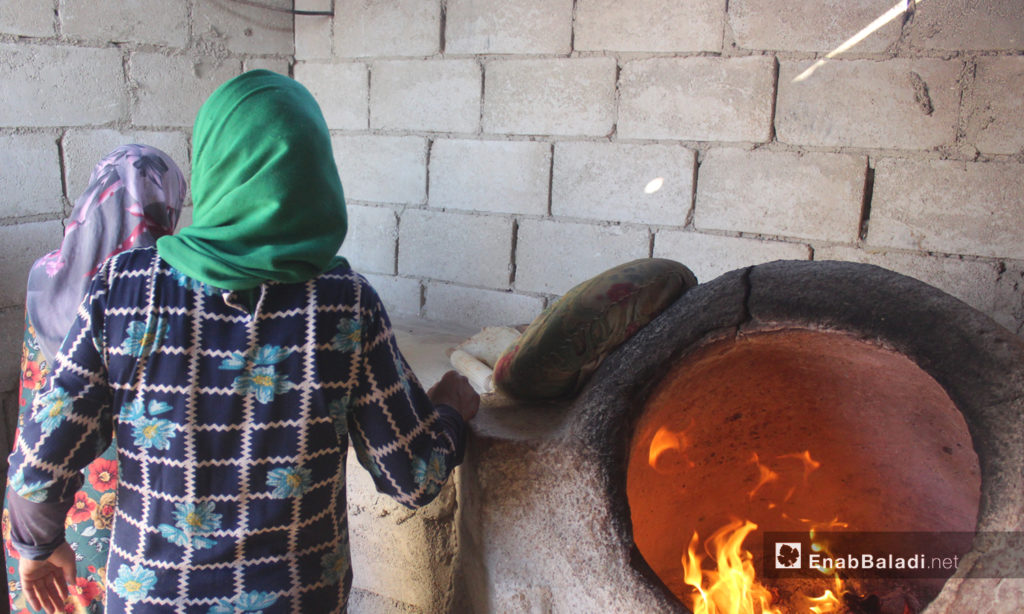Enab Baladi – Idlib Countryside
With each sunrise, the aroma of the fresh tandoor-baked bread wafts through al-Sultan camp in the northern countryside of Idlib, and women move between the tents carrying breadbaskets on their heads.
Buthaina is proud that she can knead bread dough and bake so quickly. Her neighbors enjoy helping her make bread balls and pies and chatting with her about the memories brought back by the tandoor oven about their villages they were forced to leave.
Kneading and baking bread dough … a solution to bread crisis
Despite the weary eyes of the 60-something-years-old woman, Buthaina says she is “happy” preparing the tandoor oven for use. She said that “the tandoori oven reminds me of the good old days in my village and every time I bake, I cry and cry of nostalgia .”
Buthaina was displaced from Maar Shamshah in the countryside of Maarat al-Numan a year ago, accompanied by her 11 children, to find a shelter in al-Sultan Camp.
They need six to seven batches of bread per day, at a cost ranging from three to four thousand Syrian pounds (1.2 to 1.7 USD), which the family used to secure with difficulty.
Buthaina’s wrinkled hands were filled with flour while she was baking enough bread loaves for her family. “Tandoori bread (flatbreads) is better than regular white bread; it stays fresh and unmolds for one week,” said Buthaina.
ِAn individual donation was received four months ago to equip the camp’s 200 families with eight tandoori ovens built-in rooms.
At dusk, Buthaina begins making bread by sifting flour and preparing the bread dough. Then, she flattens it into discs and divides it into small balls. After that, she flattens each ball and slapps it on the oven wall where it will stick and cook. She indicated, “I knead, flatten the bread dough into discs, and in the dawn, I start spreading the loaves.”
The neighbors sat in one of the tandoor rooms with each other, spreading the filling of red-pepper paste onto the thin bread rolls, exchanging conversations; the 30-year-old man describes the impact of the tandoori ovens on the camp residents to Enab Baladi.
In the near past, displaced people were struggling to secure bread because the camp was not provided with sufficient assistance by relief organizations, said Huwaidi Sultan, one of the camp members’ committee.
The only cost that camp residents have to pay today, Huwaidi said, is the time and effort necessary for kneading and baking bread dough after the donor provided them with the flour and wood.
Relief organizations plan to increase bread distribution programs to reach more beneficiaries throughout the governorates of Idlib and Aleppo. ِAccording to the assessment of the food security sector in northwestern Syria, with the bread distribution plan, the number of beneficiaries increased in Idlib from 673 K to 975 K from July to last September.
The bread prices rose 22 percent from April to May 2020, and more than 30 percent of the bakeries in the area were closed; some camp families “used to spend days without bread.”
Tandoor ovens provided a solution to the bread crisis, as flour was distributed equally to camp residents. Women usually make enough bread for their families once a week.
There is a difference between the bread made in the tandoori oven and bread produced in the “large” automatic bakery, according to Howeidi. He pointed out that despite the use of high-quality flour in the bakeries, the tandoori bread “has a special taste” associated with the camp residents’ memories.

